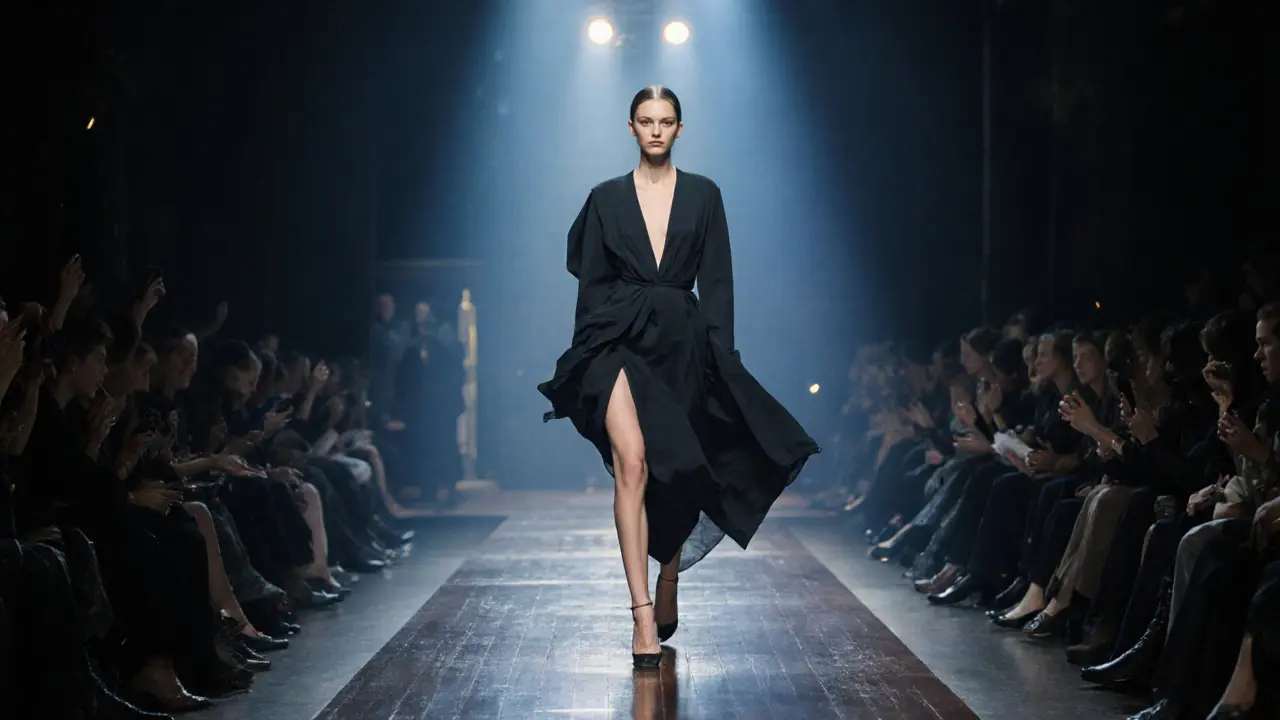You’ve seen them-striding down the runway in heels taller than your average coffee table, eyes locked forward, not a single wobble in their step. No matter the designer, the fabric, or the lighting, they own every inch of that catwalk. But here’s the truth most magazines won’t tell you: supermodels don’t walk like that because they’re born with it. They walk like that because they’ve trained their minds as hard as their bodies.
What Really Makes a Supermodel?
A supermodel isn’t just tall, thin, and photogenic. That’s the checklist. The real difference? The quiet, unshakable confidence that turns a walk into a statement. Think about it-when you’re standing in front of 500 people, flashing lights, and a global audience watching live, the pressure isn’t just about looking good. It’s about not breaking. Not freezing. Not second-guessing your next step.
Back in the ’90s, Naomi Campbell walked the runway barefoot after her heel snapped. No pause. No panic. Just kept going like it was planned. Cindy Crawford once turned her ankle mid-show and finished the walk with a smirk. These weren’t lucky moments. They were the result of mental conditioning.
Supermodels train their confidence the same way athletes train their muscles. It’s not magic. It’s repetition. It’s visualization. It’s learning to silence the inner voice that says, ‘What if I trip?’ and replacing it with, ‘I’ve done this a hundred times.’
Why Confidence Matters More Than Looks
Let’s be real-there are thousands of models with perfect bone structure, flawless skin, and runway-ready measurements. But only a handful become supermodels. Why? Because looks get you in the door. Confidence keeps you on the runway.
Designers don’t hire models just to wear clothes. They hire them to sell a feeling. A supermodel doesn’t just carry a dress-they embody the brand’s identity. When Alessandra Ambrosio walked for Victoria’s Secret, she didn’t just strut. She made you believe in fantasy. When Gigi Hadid walked for Chanel, she didn’t just move. She made you feel the elegance of the house.
That’s not something you learn in a modeling school. That’s something you build through rejection, late nights, and learning to stand tall even when no one’s clapping.
How Supermodels Build Confidence on the Catwalk
Here’s how the top models train their mindset:
- Walk the line daily-Even on off-days, they practice their walk in front of a mirror or record themselves. It’s not about perfection. It’s about muscle memory.
- Visualize success-Before a show, many spend 10 minutes closing their eyes and imagining the lights, the music, the crowd. They don’t picture the mistakes-they picture walking like a queen.
- Control their breathing-When nerves hit, breath becomes shallow. Supermodels train to breathe deep and slow, even under pressure. It’s the same trick fighters use before a match.
- Embrace the awkward-They’ve all had moments where they felt ridiculous in front of the camera or on the runway. But they learned to laugh it off. That’s confidence-not pretending you’re never scared, but knowing you can walk through fear.
- Surround themselves with the right energy-The best models avoid toxic environments. They choose teams that lift them up, not tear them down. Confidence isn’t built in isolation.
It’s not about being fearless. It’s about moving forward even when your heart’s pounding.

The Psychology Behind the Stride
There’s real science behind why supermodels carry themselves the way they do. Studies from Harvard and Stanford show that body language shapes how you feel. Standing tall for just two minutes can increase testosterone (the confidence hormone) and lower cortisol (the stress hormone).
Supermodels know this. They don’t just pose for photos-they use posture as a tool. Shoulders back, chin up, gaze straight ahead. It’s not just for the cameras. It’s for their own minds. When you hold power poses, your brain believes you’re powerful.
That’s why you’ll never see a top model slouching backstage. Even when they’re tired, hungry, or stressed, they reset their posture. It’s not vanity. It’s strategy.
Confidence Isn’t Just for Runways
Here’s the thing-this isn’t just about fashion. The same confidence that powers a supermodel on the catwalk can change your life.
Ever walked into a job interview feeling like you didn’t belong? That’s the same feeling a rookie model gets on their first runway. Ever frozen during a presentation because you were afraid of looking stupid? That’s the same fear that makes new models want to hide behind their hair.
Supermodels teach us that confidence isn’t something you’re born with. It’s something you build, one step at a time. You don’t need to be a model to use their tools. Practice your walk in front of the mirror. Breathe before you speak. Own your space. You don’t have to be famous to feel powerful.

What Happens When Confidence Fades?
Even the biggest names have fallen. Some disappeared after years of being told they weren’t ‘right’ for the industry. Others lost themselves chasing trends, trying to fit into a mold that didn’t fit their soul.
Confidence built on external validation-likes, magazine covers, designer calls-is fragile. It cracks when the attention fades.
The real supermodels? They learned to find confidence from within. Karolina Kurkova once said, ‘I stopped modeling for them. I started modeling for me.’ That shift-from seeking approval to owning your worth-is what separates legends from fleeting stars.
Supermodels Today: More Than Just Walks
Today’s supermodels aren’t just walking for Chanel or Versace. They’re running businesses. Launching beauty lines. Speaking out on mental health. Naomi Campbell started a foundation for young models. Adwoa Aboah talks openly about depression and self-worth. Gigi Hadid advocates for body positivity.
Confidence on the catwalk has evolved. It’s not just about walking in stilettos. It’s about walking with purpose. It’s about using your voice, your platform, your presence to say, ‘I am more than my image.’
Final Thought: You Don’t Need a Runway to Be a Supermodel
Maybe you’ll never walk in Paris Fashion Week. Maybe you’ll never see your face on a billboard. But you can still walk into a room like you own it.
That’s the real lesson. Supermodels aren’t special because they’re tall or thin or famous. They’re special because they refused to shrink. They chose to stand tall-even when the world tried to make them small.
So next time you’re nervous before a meeting, a date, or even just walking into a room full of strangers-take a breath. Shoulders back. Head high. And walk like you belong there. Because you do.
What makes a model a supermodel?
A supermodel isn’t just defined by looks or height. They’re known for their lasting impact, global recognition, and the ability to command attention on and off the runway. Supermodels like Naomi Campbell, Cindy Crawford, and Kate Moss didn’t just walk-they shaped culture, landed exclusive contracts, and became household names beyond fashion.
Can confidence be learned, or is it natural?
Confidence is learned. While some people seem naturally self-assured, every supermodel has had moments of doubt. What sets them apart is their daily practice: posture training, visualization, breathing techniques, and surrounding themselves with supportive people. Confidence is a habit, not a trait.
Do supermodels ever get nervous before shows?
Absolutely. Even the most seasoned models feel butterflies. The difference? They don’t let nerves stop them. They use techniques like deep breathing, focusing on their walk rhythm, or repeating a personal mantra. Nervous energy becomes fuel-not a barrier.
How do supermodels handle rejection?
Rejection is part of the job-sometimes you’ll go to 20 castings and get zero calls. Top models treat it like a numbers game. They focus on what they can control: their preparation, their attitude, their professionalism. They know one ‘no’ doesn’t define their worth. Many say their biggest break came after their 10th rejection.
Is there an age limit to becoming a supermodel?
No. While many start in their teens, some of the most iconic supermodels-like Lauren Hutton, Maye Musk, and Naomi Campbell-have had major comebacks or continued careers well into their 50s and 60s. The industry is slowly shifting to value experience, character, and presence over youth alone.





